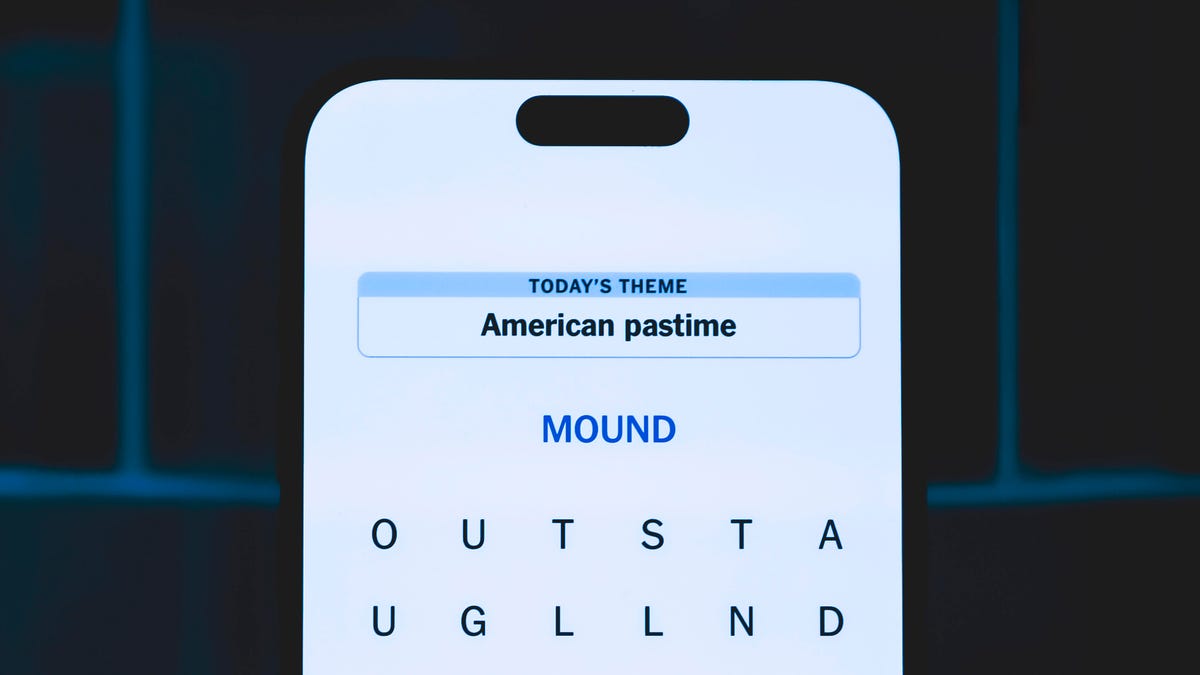Technologies
Trump’s ‘One Big Beautiful Bill’: The Huge Tax and Medicaid Implications You Need to Know
The GOP’s contentious budget bill narrowly passed in the House, faces dissent in the Senate and has drawn the ire of Elon Musk in a big way.
President Donald Trump has made the extension of the 2017 tax cuts one of his major second-term economic goals — you know, aside from all those tariffs — but as the so-called «One Big Beautiful Bill» has moved forward, it’s faced major pushback. Some of this opposition might lead to significant changes to the bill and how it might ultimately impact you, especially when it comes to taxes and services like Medicaid.
After much back-and-forth, negotiation and failed votes, the bill passed in the House of Representatives by the thinnest margin possible, 215-214-1. The bill is now moving through the Senate, where it is expected to face more alterations before getting across the finish line. While the GOP has been attempting to use the reconciliation process to avoid the bill being filibustered by Democrats, it is still expected to face intra-party dissent similar to what it went through in the House over its cuts either being too severe or not severe enough.
Elon Musk, the Tesla CEO and one-time Trump adviser who led the «DOGE» government consolidation efforts, spoke out against the bill in an unsparing fashion in a Tuesday post to X, decrying it as too heavy on spending. This disagreement with Trump and his agenda led to a prolonged public spat between the president and his one-time senior advisor.
«This massive, outrageous, pork-filled Congressional spending bill is a disgusting abomination,» Musk wrote. «Shame on those who voted for it: you know you did wrong. You know it.»
Despite the broad nature of the bill, one of its central goals remains the extension of the 2017 Trump tax cuts. Passed for the first time early in his first term, the Tax Cuts and Jobs Act, as it was officially known, was one of Trump’s signature legislative accomplishments and has generally become known as the «Trump tax cuts.» Given the nature of how that bill was passed initially, a lot of its provisions are set to expire next year if a new extension isn’t passed, so doing just that has unsurprisingly emerged as a major priority for Trump and the GOP-led houses of Congress.
The president and his allies have also tried to claim that his aggressive tariff agenda could help offset the extension of the tax cuts, although, as we’ve touched on before at CNET, that is just one of the often-contradictory stated goals for the tariffs.
Details about the budget bill Republicans have emerged in the past few weeks as it moved through the House Ways and Means Committee approval process. The Congressional Budget Office, an agency that provides estimates about the economic impacts of budgetary bills that is not affiliated with any party, estimated that the cuts called for in this bill would cost millions of people their health insurance and food benefits. The proposal initially failed to pass a vote in the House, leading to its cuts for Medicaid becoming even heavier.
All this comes in addition to the longstanding criticism from Democrats and other critics that Trump’s tax cuts disproportionately help the wealthiest Americans more than the working class. While there is truth to that argument, and to the Republican counter that the tax cuts would provide some help to taxpayers at all incomes, the new proposed cuts unveiled this week have given more weight to the notion that they will be more harmful for the least wealthy Americans.
For all the details about what extending the tax cuts will actually mean and what the current terms mean for things like Medicaid, keep reading. For more, find out if Trump could actually abolish the Department of Education.
How will the budget bill impact Medicaid?
According to the estimates from the Congressional Budget Office mentioned at the start of this piece, at least 7.6 million Americans would lose Medicaid health insurance under the provisions in the budget proposal. That’s nearly 11% of the 70 million Americans who are currently insured by Medicaid. The proposal would, among other things, require people without dependent children or a disability to meet an 80-hour-a-month work requirement to qualify for Medicaid and increase the frequency with which people will need to confirm their continued eligibility.
These new requirements were originally set to take effect in 2029 under the bill’s failed House version, but they were moved forward to 2026 in the bill’s passed version.
What would extending the Trump tax cuts mean?
While the phrase «Trump tax cuts» has become a common media shorthand for the Tax Cuts and Jobs Act, the current conversation around it might suggest that new cuts could be on the way. Although Trump has floated ideas for additional cuts, it’s important to note that extending the 2017 provisions would, for the most part, keep tax rates and programs at the levels they’ve been at since then.
So while it may be a better option than having the provisions expire — which would increase certain tax rates and decrease certain credits — extending the tax cuts most likely won’t change how you’ve been taxed the past eight years. However, some estimates have predicted that extending the cuts would boost income in 2026, with the conservative-leaning Tax Foundation in particular predicting a 2.9% rise on average, based on a combination of other economic predictions combined with tax rates staying where they are.
What would change if the Trump tax cuts expire?
Republicans contend that the tax cuts helped a wide swath of Americans, and the Tax Foundation predicted that 60% of tax filers would see higher rates in 2026 without an extension.
A big part of that has to do with tax bracket changes. The 2017 provisions lowered the income tax rates across the seven brackets, aside from the first (10%) and the sixth (35%). If the current law expires, those rates would go up by between 1% and 3%.
Income limits for each bracket would also revert to pre-2017 levels. Lending credence to the Democrats’ counterarguments, these shifts under the Trump tax cuts appeared to be more beneficial to individuals and couples at higher income levels than to those making closer to the average US income.
If you’re interested in the nitty-gritty numbers, you can check out the Tax Foundation’s full breakdown. Another point in Democrats’ favor? The Tax Cuts and Jobs Act also cut corporate tax rates from 35% to 21%, and unlike many of its other provisions, this one was permanent and won’t expire in 2026.
What would happen to the standard deduction?
This is another area in which a lot of people would be hit hard. The standard deduction lets taxpayers lower their taxable income, as long as they forgo itemizing any deductions.
For the 2025 tax year, the standard deduction is $15,000 for individual filers and $30,000 for joint filers. If the tax cuts expire, these numbers will drop by nearly half, down to $8,350 for individuals and $16,700 for joint filers.
Under the current reconciliation bill, the deduction would increase to $16,000 for individuals and $32,000 for joint filers, but only through 2028.
What would happen to the child tax credit?
The child tax credit is one of the most popular credits. Its current levels — $2,000 per qualifying child, which phases out starting at a gross income of $200,000 for single filers and $400,000 for joint filers — were actually set by the Tax Cuts and Jobs Act.
If an extension or new bill isn’t passed, next year the child tax credit would revert to its old levels: $1,000 per child, which starts phasing out at $75,000 for single filers and $110,000 for joint filers.
If the current budget bill is implemented, the credit will be upped to $2,500 per child through 2028, before dropping to $2,000 as its new permanent rate.
Do the Trump tax cuts really favor the wealthy?
Higher-income individuals and couples fared notably better with the changes the Trump tax cuts made to tax brackets. An estimate from the Institute on Taxation and Economic Policy, a left-leaning think tank, found that the poorest 20% of Americans would see only about 1% of the bill’s net tax cuts. Numerous similar estimates agree that these small benefits for the poorest taxpayers would be outweighed by rising costs caused by tariffs.
Conversely, ITEP’s estimate found that the richest 20% of US taxpayers would benefit from around 67% of the bill’s net tax cuts, with the richest 5% benefitting from half of them.
How much would extending the tax cuts cost?
Both the Congressional Budget Office and the Tax Foundation have estimated that the reconciliation bill’s tax cut extension would raise the US deficit by $4.5 trillion over the course of 10 years. The Tax Foundation also estimated that it could raise the country’s GDP to offset that number, but only by about $710 billion, or about 16% of the deficit increase.
For more, see how Trump’s tariffs might be affecting the prices of several key products in our daily tracker.
Technologies
Today’s NYT Connections Hints, Answers and Help for Dec. 26, #929
Here are some hints and the answers for the NYT Connections puzzle for Dec. 26 #929

Looking for the most recent Connections answers? Click here for today’s Connections hints, as well as our daily answers and hints for The New York Times Mini Crossword, Wordle, Connections: Sports Edition and Strands puzzles.
Today’s NYT Connections puzzle is full of fun pop-culture references. Read on for clues and today’s Connections answers.
The Times has a Connections Bot, like the one for Wordle. Go there after you play to receive a numeric score and to have the program analyze your answers. Players who are registered with the Times Games section can now nerd out by following their progress, including the number of puzzles completed, win rate, number of times they nabbed a perfect score and their win streak.
Read more: Hints, Tips and Strategies to Help You Win at NYT Connections Every Time
Hints for today’s Connections groups
Here are four hints for the groupings in today’s Connections puzzle, ranked from the easiest yellow group to the tough (and sometimes bizarre) purple group.
Yellow group hint: Golden state cliches.
Green group hint: Funny films.
Blue group hint: Rock on.
Purple group hint: Not white.
Answers for today’s Connections groups
Yellow group: California-based character tropes.
Green group: Comedy subgenres.
Blue group: ’70s rock bands.
Purple group: Black ____.
Read more: Wordle Cheat Sheet: Here Are the Most Popular Letters Used in English Words
What are today’s Connections answers?
The yellow words in today’s Connections
The theme is California-based character tropes. The four answers are movie exec, surfer, tech bro and Valley Girl.
The green words in today’s Connections
The theme is comedy subgenres. The four answers are buddy, cringe, screwball and stoner.
The blue words in today’s Connections
The theme is ’70s rock bands. The four answers are America, Chicago, Foreigner and Journey.
The purple words in today’s Connections
The theme is black ____. The four answers are Forest, Friday, Panther and Widow.
Don’t miss any of our unbiased tech content and lab-based reviews. Add CNET as a preferred Google source.
Technologies
Today’s NYT Strands Hints, Answers and Help for Dec. 26 #663
Here are hints and answers for the NYT Strands puzzle for Dec. 26, No. 663.

Looking for the most recent Strands answer? Click here for our daily Strands hints, as well as our daily answers and hints for The New York Times Mini Crossword, Wordle, Connections and Connections: Sports Edition puzzles.
Today’s NYT Strands puzzle is a fun one, but you might struggle at first to see a connection between the words. If you need hints and answers, read on.
I go into depth about the rules for Strands in this story.
If you’re looking for today’s Wordle, Connections and Mini Crossword answers, you can visit CNET’s NYT puzzle hints page.
Read more: NYT Connections Turns 1: These Are the 5 Toughest Puzzles So Far
Hint for today’s Strands puzzle
Today’s Strands theme is: Please hold.
If that doesn’t help you, here’s a clue: Cats love these more than they love expensive toys.
Clue words to unlock in-game hints
Your goal is to find hidden words that fit the puzzle’s theme. If you’re stuck, find any words you can. Every time you find three words of four letters or more, Strands will reveal one of the theme words. These are the words I used to get those hints, but any words of four or more letters that you find will work:
- BOXING, CHEAT, HEAT, SMOCK, MOCK, LATE, TEAM, MEAT, TEAMS, LOOT, TOLE, BALL, BALE, KALE, TALL
Answers for today’s Strands puzzle
These are the answers that tie into the theme. The goal of the puzzle is to find them all, including the spangram, a theme word that reaches from one side of the puzzle to the other. When you have all of them (I originally thought there were always eight but learned that the number can vary), every letter on the board will be used. Here are the nonspangram answers:
- GIFT, SHOE, TOOL, LUNCH, MATCH, PIZZA, BALLOT, TACKLE (All are words that can be placed in front of «box.»)
Today’s Strands spangram
Today’s Strands spangram is BOXINGDAY. To find it, start with the B that’s four letters down on the far-left row, and wind across and then down.
Don’t miss any of our unbiased tech content and lab-based reviews. Add CNET as a preferred Google source.
Technologies
Today’s Wordle Hints, Answer and Help for Dec. 25, #1650
Here are hints and the answer for today’s Wordle for Dec. 25, No. 1,650.

Looking for the most recent Wordle answer? Click here for today’s Wordle hints, as well as our daily answers and hints for The New York Times Mini Crossword, Connections, Connections: Sports Edition and Strands puzzles.
Today’s Wordle puzzle has some tough-to-guess letters. If you need a new starter word, check out our list of which letters show up the most in English words. If you need hints and the answer, read on.
Read more: New Study Reveals Wordle’s Top 10 Toughest Words of 2025
Today’s Wordle hints
Before we show you today’s Wordle answer, we’ll give you some hints. If you don’t want a spoiler, look away now.
Wordle hint No. 1: Repeats
Today’s Wordle answer has no repeated letters.
Wordle hint No. 2: Vowels
Today’s Wordle answer has one vowel.
Wordle hint No. 3: First letter
Today’s Wordle answer begins with P.
Wordle hint No. 4: Last letter
Today’s Wordle answer ends with M.
Wordle hint No. 5: Meaning
Today’s Wordle answer can refer to a geometric figure.
TODAY’S WORDLE ANSWER
Today’s Wordle answer is PRISM.
Yesterday’s Wordle answer
Yesterday’s Wordle answer, Dec. 24, No. 1649, was SPOOL.
Recent Wordle answers
Dec. 20, No. 1645: WHITE
Dec. 21, No. 1646: QUILT
Dec. 22, No. 1647: CONCH
Dec. 23, No. 1648: GLINT
Don’t miss any of our unbiased tech content and lab-based reviews. Add CNET as a preferred Google source.
What’s the best Wordle starting word?
Don’t be afraid to use our tip sheet ranking all the letters in the alphabet by frequency of uses. In short, you want starter words that lean heavy on E, A and R, and don’t contain Z, J and Q.
Some solid starter words to try:
ADIEU
TRAIN
CLOSE
STARE
NOISE
-

 Technologies3 года ago
Technologies3 года agoTech Companies Need to Be Held Accountable for Security, Experts Say
-

 Technologies3 года ago
Technologies3 года agoBest Handheld Game Console in 2023
-

 Technologies3 года ago
Technologies3 года agoTighten Up Your VR Game With the Best Head Straps for Quest 2
-

 Technologies4 года ago
Technologies4 года agoBlack Friday 2021: The best deals on TVs, headphones, kitchenware, and more
-

 Technologies4 года ago
Technologies4 года agoVerum, Wickr and Threema: next generation secured messengers
-

 Technologies4 года ago
Technologies4 года agoGoogle to require vaccinations as Silicon Valley rethinks return-to-office policies
-

 Technologies4 года ago
Technologies4 года agoOlivia Harlan Dekker for Verum Messenger
-

 Technologies4 года ago
Technologies4 года agoiPhone 13 event: How to watch Apple’s big announcement tomorrow
